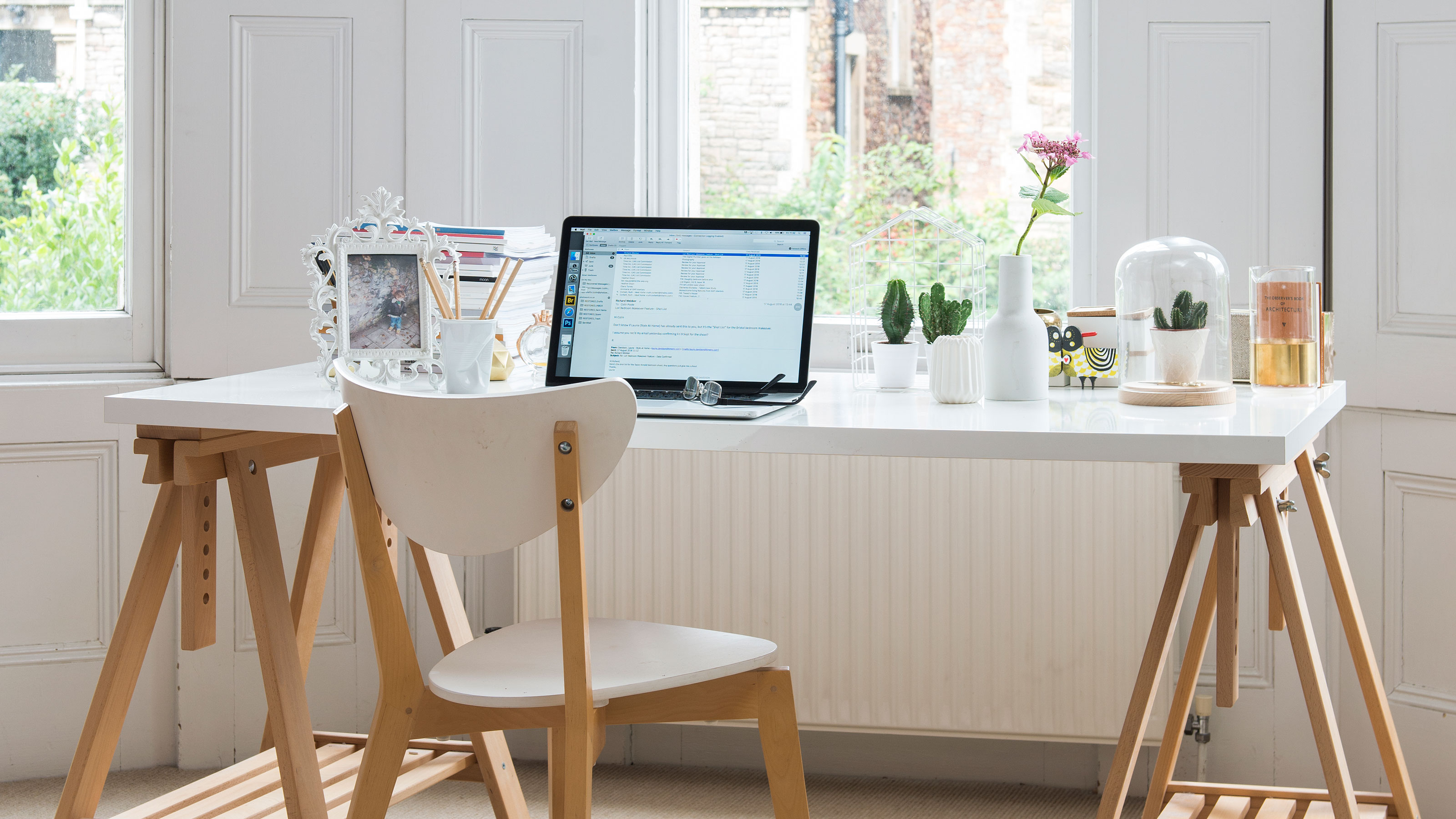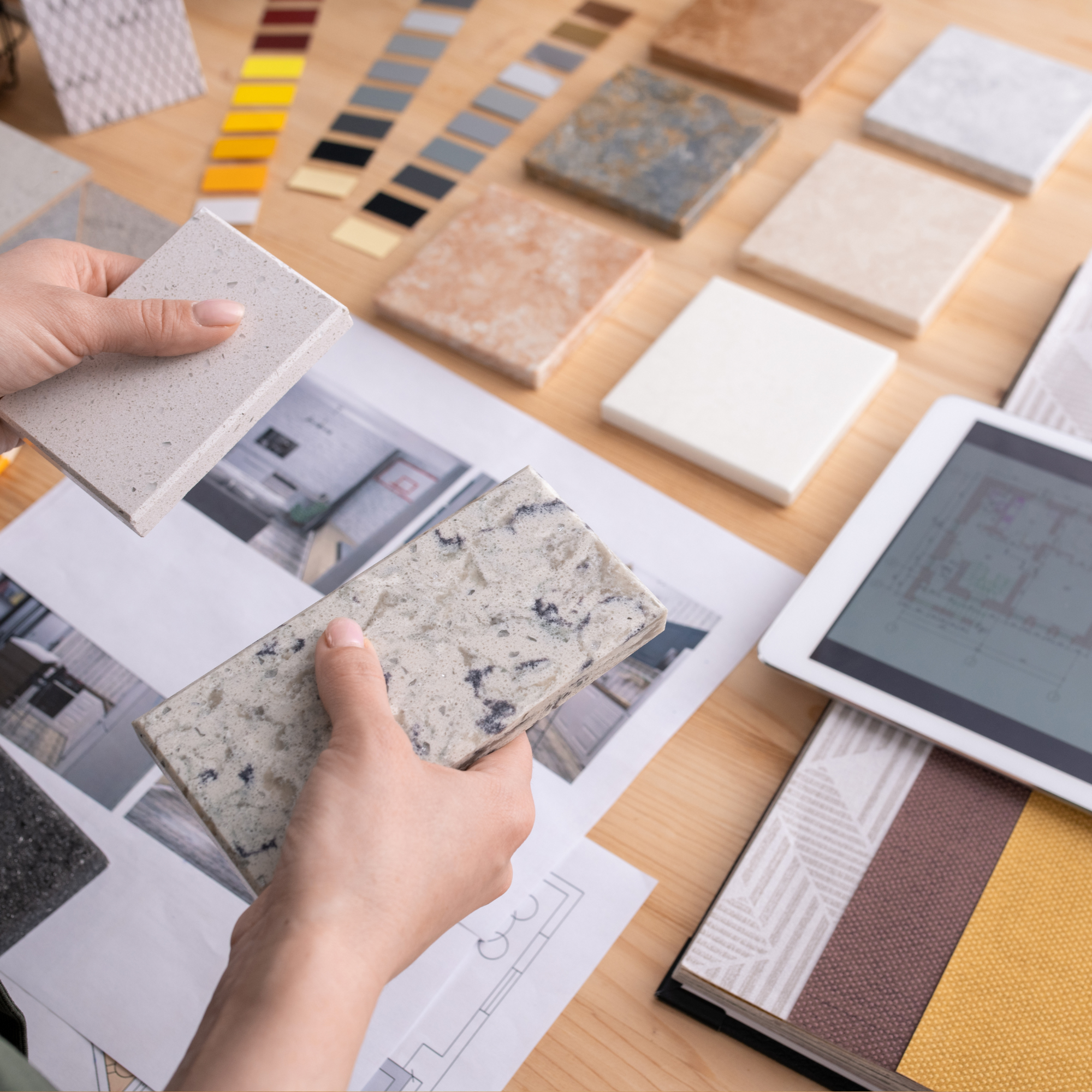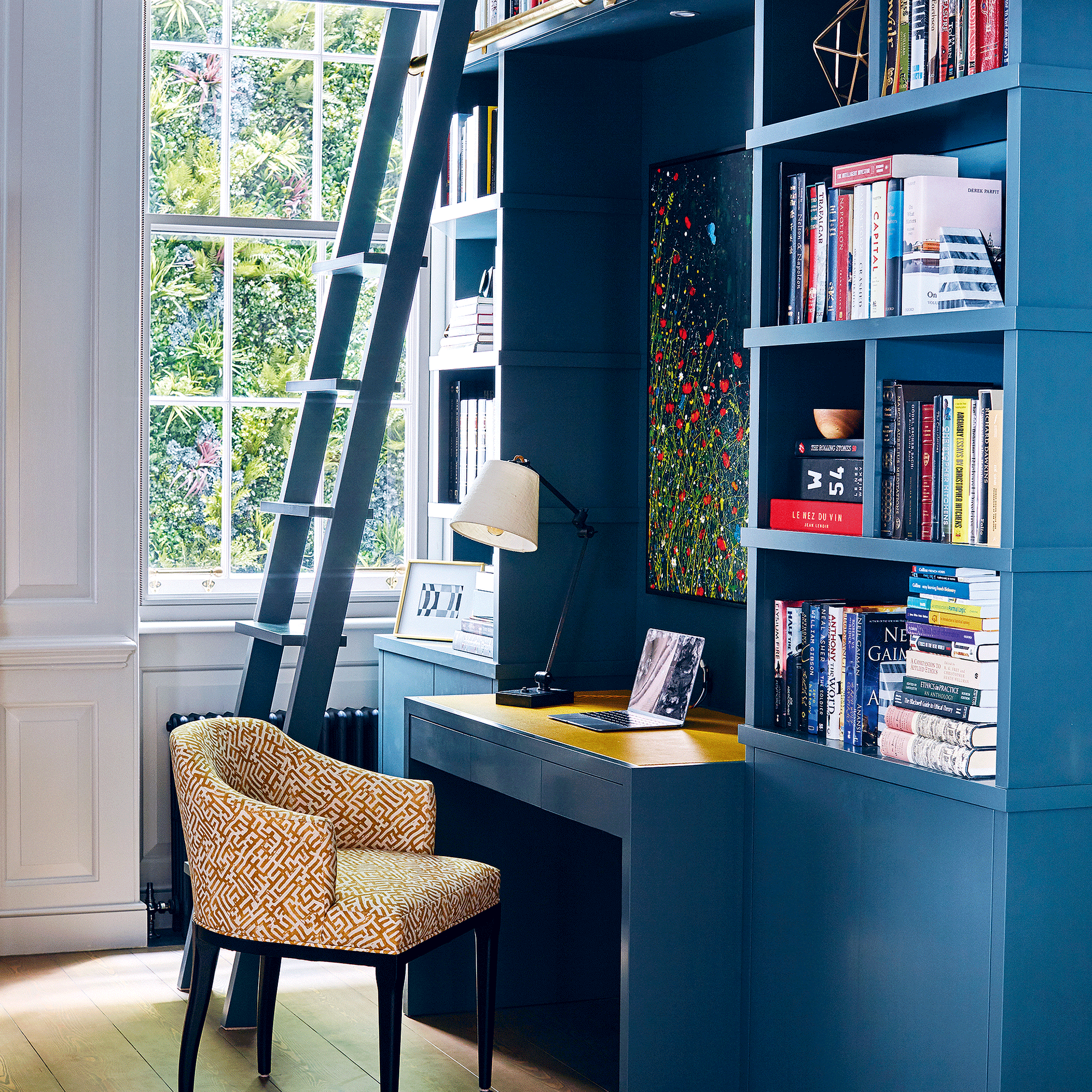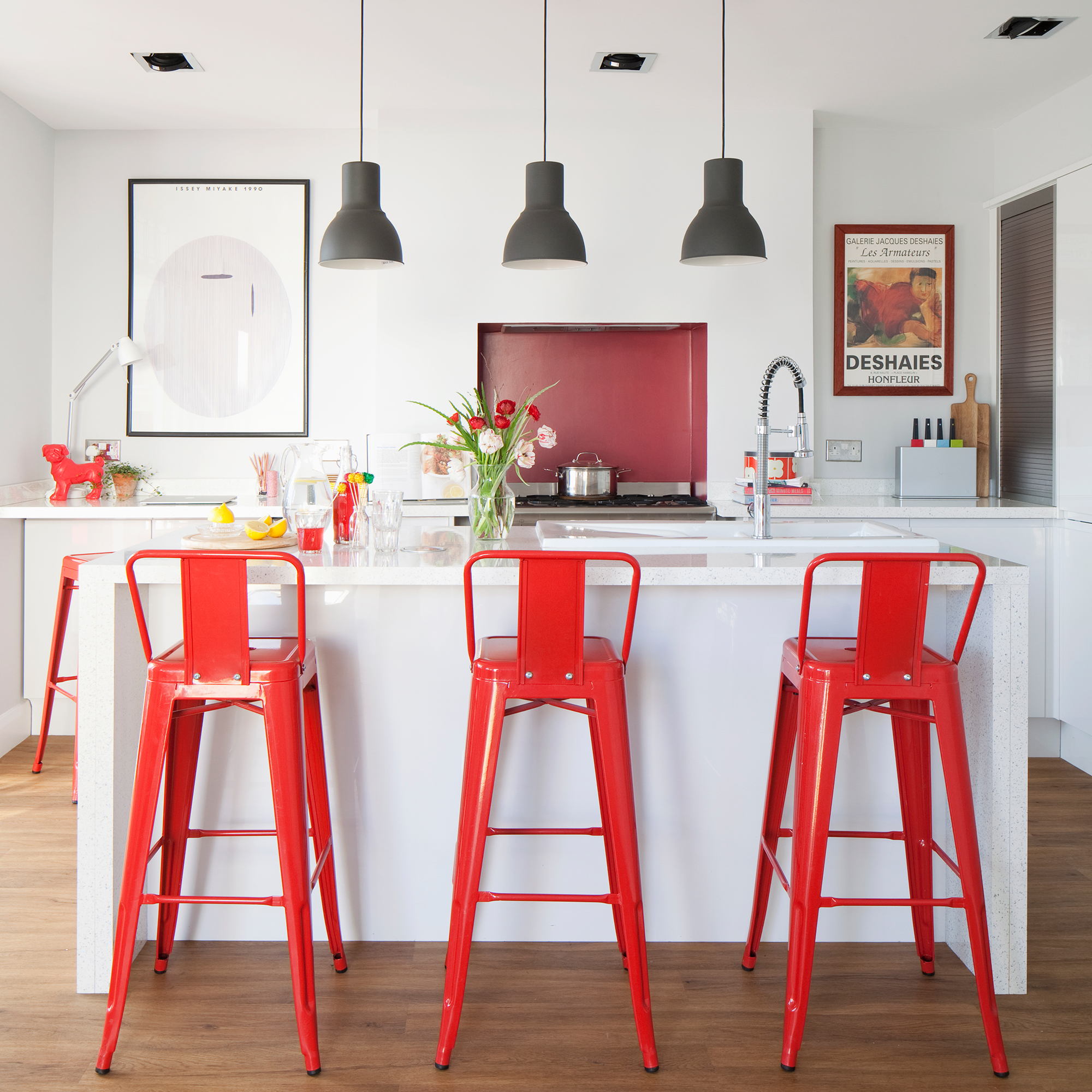What does the future of home and garden design look like? We asked ChatGPT
... and the AI bot's answers were illuminating, to say the least


For many years, the evolution of artificial intelligence was ticking away slowly in the background. A customer service bot here, a factory machine there – and let’s not forget the likes of Alexa, Siri, and Google Translate.
Over the past few months, though, AI tech has evolved at an overwhelmingly rapid velocity. In fact, this week saw Google dominate headlines when it announced that it is joining the AI arms race with a multi-language translator tool and a creative writing aid, among other tools.
Essentially, it seems as if artificial intelligence is moving away from the menial and mundane, and into the domain of the meaningful. We’ve already seen it used to write articles, produce artwork, and even create music, so it stands to reason that it will have a huge impact on the world of home decor and garden design, too. Many people, in fact, have begun to fear that it will replace human designers entirely.
Is this really the case, though? Not according to ChatGPT, who seemed suitably aghast when I asked it about its plans for world domination.
Wait, what is ChatGPT?
According to its creators at OpenAI, ChatGPT is, ‘an artificial intelligence trained to assist with a variety of tasks.’ So far, so vague – which is why I’ll add this: it’s basically a chatbot that’s been designed to produce human-like text and converse with people. You just type your query, or ‘prompt’, into the box provided, and it’ll generate a response accordingly.
This means that you can quiz it about mindless trivia, if the mood takes you, or ask it to explain complex subjects. ChatGPT does more than just chat, mind you: people have been able to produce entire articles and essays, and some have even coaxed it into composing music. It can also (if you ask it the right questions) design a brand logo, make a 3D animation, dish out some writing prompts and ideas, and create content in multiple languages.
It can code, it can play games, it can write novels, and it can even help you prepare for job interviews. Can it do interior design, though?
Sign up to our newsletter for style inspiration, real homes, project and garden advice and shopping know-how
Will AI replace humans when it comes to home and garden design?
'Interior and garden designers don't need to be scared,’ the AI language model insisted.
‘It's important to remember that AI is simply a tool created by humans. It can't replicate the creativity, originality, and emotional depth that human beings are capable of expressing through their work.
‘Instead, AI can assist creatives by providing new ideas, streamlining workflows, and offering new ways of visualising data.’

Can AI and chatbot do interior design?
Intrigued to put the first part of this bold claim to the test, I decided to ask ChatGPT to share a few of its 'new' ideas for home and garden design with me.
'I would predict that minimalist design, natural materials, and maximalism will continue to be popular in 2024,' it informed me confidently, parroting the same home decor trends I've seen all over the internet already.

Then, warming to its theme, ChatGPT went on to suggest that the easiest way to 'inject personality into home decor' is through 'incorporating personal mementos or artwork, using colour schemes that reflect personal taste, and utilising unique and unexpected design elements'.
I decided to dig a little deeper, only to be informed that 'neutral colours such as grey, white, and beige' are essential when it comes to 'creating a clean and contemporary look'. (To paraphrase The Devil Wears Prada's Miranda Priestley: neutrals? For a modern home? Ground-breaking).

The rest of our chat is much the same, with the AI bot being oddly reticent at making hard and fast decisions. When asked if it prefers wallpaper ideas or paint ideas, it shyly batted away the question, insisting it doesn't have favourites or preferences. The same thing happened when I asked about flooring types, iconic interior designers and their works, and TikTok gardening trends.
However, when I asked ChatGPT if there were any interior design trends it despised, the AI bot suddenly became quite opinionated.
'The most dated interior design trend that needs to be retired is probably popcorn ceilings, as they can make a space look outdated and unattractive,' it said firmly.

How can interior designers use AI to enhance their ideas?
Based on everything I've learned so far, it seems ChatGPT isn't lying when it says that, while 'AI can assist in designing rooms or gardens by providing suggestions based on trends... human creativity and intuition are still crucial in the design process.'
No kidding. With this in mind, then, how can interior and garden designers use AI-powered design tools to generate design ideas and layouts?
Well, ChatGPT suggests looking to the likes of Planner5D, SketchUP, InteriorAI, and Midjourney, as these allow users to input information, such as room size, style preferences, and budget.
Then, they can quickly create multiple design concepts, test different furniture, paint colours, and finishes in a space, ostensibly saving time and resources in the process.

So, will AI create more or less opportunities for people in the world of home and garden design?
It's certainly a thorny topic, especially as, according to the World Economic Forum's The Future of Jobs Report 2020, AI is expected to replace 85 million jobs worldwide by 2025. At the same time, though, it’s predicted that AI will create 97 million new jobs – so how will this impact the world of interior design?
‘I believe AI has the potential to democratise the design process by making it more accessible to people who cannot afford traditional design services,’ mused ChatGPT, when I put the question to it.
'AI-powered software and platforms can provide free or low-cost access to professional-grade creative tools that were previously only available to those with the financial means to afford them. Additionally, AI can help to surface and amplify voices from underrepresented communities, allowing them to tell their stories and share their experiences on a wider scale.
‘However, there is a risk that AI-powered design services could create a divide between those who can afford them and those who cannot.’
What do interior and garden designers think of AI tech?
Team Pro AI
Aurélie Tshiama, of Aurélie Tshiama: The Studio, has already begun using AI – and to great effect, too. Just check out 'The Flat', a 3-bed apartment that the interior designer virtually designed room by room, if you need proof.
'Oh boy, the future of interior design and AI,' she says. 'It's a topic that's both exciting and a little bit terrifying at the same time. Loving both interior design and tech, I might be a little biased, but I think there's a lot of potential for technology to revolutionise the way we approach design.
'For one thing, I can definitely see AI helping designers create more personalized spaces for their clients. Picture this: you walk into a designer's office, and instead of flipping through a bunch of sample books, you just answer a few questions about your style and preferences. Next thing you know, you've got a gorgeous design proposal tailored exactly to your tastes. It's like magic!

'And let's not forget about sustainability. With AI, designers could optimize spaces for efficiency and eco-friendliness, which is great news for the planet. Plus, we might start seeing more futuristic tech integrated into homes – who knows, maybe we'll all have voice-activated lights and smart fridges in a few years.'
While Aurélie understands the fear that AI could replace human designers altogether, she stresses that, having used the tech in some of her own projects, she's realised that there’s just nothing quite like human connection.
'All in all, I think the future of interior design and AI is full of possibilities. We just have to make sure we're using technology to enhance our creativity and intuition, rather than replacing it altogether.
'Who knows, with the right mix of human and machine creativity, we might just see some of the most stunning designs yet!'
The less convinced designers
Kunal Trehan, Design Director at Touched Interiors, understands the appeal of AI tech, but he isn't convinced that it will ever be sophisticated enough to work effectively.
'Interior design is a solution that is completely tailored to a client’s style, wants and needs,' he says. 'The success of this depends on how well a client and designer are aligned together. So, the big question exists, can a machine make a better connection through parameters only and give a better result?
'The short answer is no: some of the apps available can, yes, give you a flavour for how something may look and offer alternative styles from bohemian to minimalist but actual achievable design requires considerations, adjustments, and tweaks on so many levels that AI is just not sophisticated enough to work effectively. You also need materials and products that are actually available and opting for something similar to the digital image provided is a recipe for disaster.'
Kunal adds: 'Maybe this system could work for clients who only want the cliché cushions and curtains from a designer, but a true professional will immerse themselves into a space to consider use, lighting, and the ultimate feel to give a comprehensive design solution and AI just isn’t intuitive enough.
'One of the biggest pitfalls is that you are falling in love with potentially just a pretty picture, which is unachievable without an expert’s intervention and guidance. If anything, it could work adversely and give you the false confidence that something works when it doesn’t, resulting in unsightly and expensive mistakes.'
Is AI capable of generating a truly original idea?

ChatGPT pulls data from all over the internet and beyond as part of its model training, but does this mean that it is incapable of a truly original idea?
‘[My ideas] may not always be completely original in the way that a human might generate an idea,’ shared ChatGPT eventually.
‘While I can generate creative and innovative responses to prompts, these are always based on the information and patterns that I have learned from the training data, and are not the result of independent thought or experience.’
It seems, then, there is space for humans in the world of home and garden design just yet. After all, any of us can copy a great interior decor idea we see on social media, but it takes a true designer to come up with that idea in the first place.

Kayleigh Dray became Ideal Home’s Acting Content Editor in the spring of 2023, and is very excited to get to work. She joins the team after a decade-long career working as a journalist and editor across a number of leading lifestyle brands, both in-house and as a freelancer.